2_11zon.jpg)
2025 Kia EV3 Review
The EV3 is the battery-powered spiritual successor to the Toyota Corolla and Hyundai i30. But is it enough to justify its place in the world?
A
UNGRADED

A
UNGRADED

What people are saying:
Pros
- Great exterior styling
- A cabin borrowed from more expensive models
- Small yet practical
Cons
- Interior is a little cold
- Wheels are just ugly
- Upper pricing hard to justify
It’s difficult not to be impressed by Kia. The company has gone from being a value brand in Australia to being a Top 10 player, as well as being an industry leader in electric vehicles. We’ll forgive them the unimaginative model names.
The latest is the EV3, which follows the EV5, EV9, and EV6 electric SUVs – with the recently-unveiled EV4 still to come.
_11zon.webp)
The EV3 is frankly a little ambitious for Kia. So far, it’s the smallest electric car in the model range, but there are a handful of models from competitors that are either the same size or bigger, and for less money.
Then there’s its proximity to the Kia EV5. We’ll touch on this a little more later, but there really isn’t a huge gap between the two, making it a more difficult decision for customers to make.
Just because a car is good, it doesn’t mean it has a justifiable place in this world. So, just how good is the EV3, and can it justify its place? Let’s find out.
How much does the Kia EV3 cost?
The 2025 Kia EV3 is priced from $47,600 before on-road costs, which seems like a pretty reasonable sum to pay for this thing – until you realise something like the BYD Atto 3 is available from $39,990 before on-road costs.
Then you step up to the higher variant, and suddenly the price becomes more expensive than the Kia EV5 – a mid-size electric SUV, priced from $56,770 before on-road costs. Even the base EV5 has more power, more torque, and a bigger battery – though with 36km less range than the EV3.

Which all makes it difficult to place the EV3. In a vacuum, without the ever-increasing number of Chinese brands, it’s a good value play – particularly once its positives are taken into account. But it’s a far harder argument given the reality of Chinese cars and their impact on the market.
The world we now live in isn’t European luxury versus the rest of the world, it’s Europe versus Japan, Japan versus South Korea, South Korea versus China. Each region having their own qualities and price points, muddying the waters for the consumer. Price gaps are increasing, while the jump in quality seems to be ever decreasing.

It’s worth nothing that Kia has released special drive-away pricing for the EV3 at launch, with minor differences for those living in Western Australia and the ACT. This means most of Australia can pick up an EV3 Air Standard Range for $48,990 drive-away, though it’s not clear how long this offer will last.
2025 Kia EV3 Pricing:
- EV3 Air Standard Range – $48,600
- EV3 Air Long Range – $53,315
- EV3 Earth Long Range – $58,600
- EV3 GT-Line Long Range – $63,950
Note: Prices exclude on-road costs and are subject to change.
Habib, Habibi:
I know it’s not to everyone’s tastes, but I think Kia is nailing it with the current design language. It’s sharp, modern, and progressive, without being too weird or different for different’s sake.
I wasn’t quite as convinced when the EV6 first hit showrooms, and I had my doubts about head designer Karim Habib when he began spruiking the carmaker’s new direction. But now it feels like super cool concept cars we used to see on motor show stands have come to life, and Kia is at the forefront of this new wave of bold design.
The EV3 embodies that kind of spirit. I think Kia’s new front-end design language is fantastic – there are just a few areas where the exterior is a little too busy, like the C-pillar.

Technically, the Kia EV3 is a small SUV. But it’s one of the latest generation of vehicles that blurs the line between a hatchback and an SUV. Despite being slightly bigger than a Volvo EX30, it really didn’t strike me as an SUV.
Then there are the wheels. I know they’re designed to be maximally aerodynamic, but they kinda just suck a bit. Many of us car nerds are prepared to sacrifice ride comfort for lower suspension (or at least we were before we became middle-aged and began making noises when we stood up), and in the same vein, I’d be happy to sacrifice some electric range for some sick wheels. But I also think black t-shirts are the epitome of fashion, so what would I know?

And perhaps for the first time, I think the standard variants actually look better than the slightly overdesigned GT-Line.

In short, throughout my time with the EV3 I kept thinking that, for what is essentially an electric Corolla alternative, this thing looks damn cool.
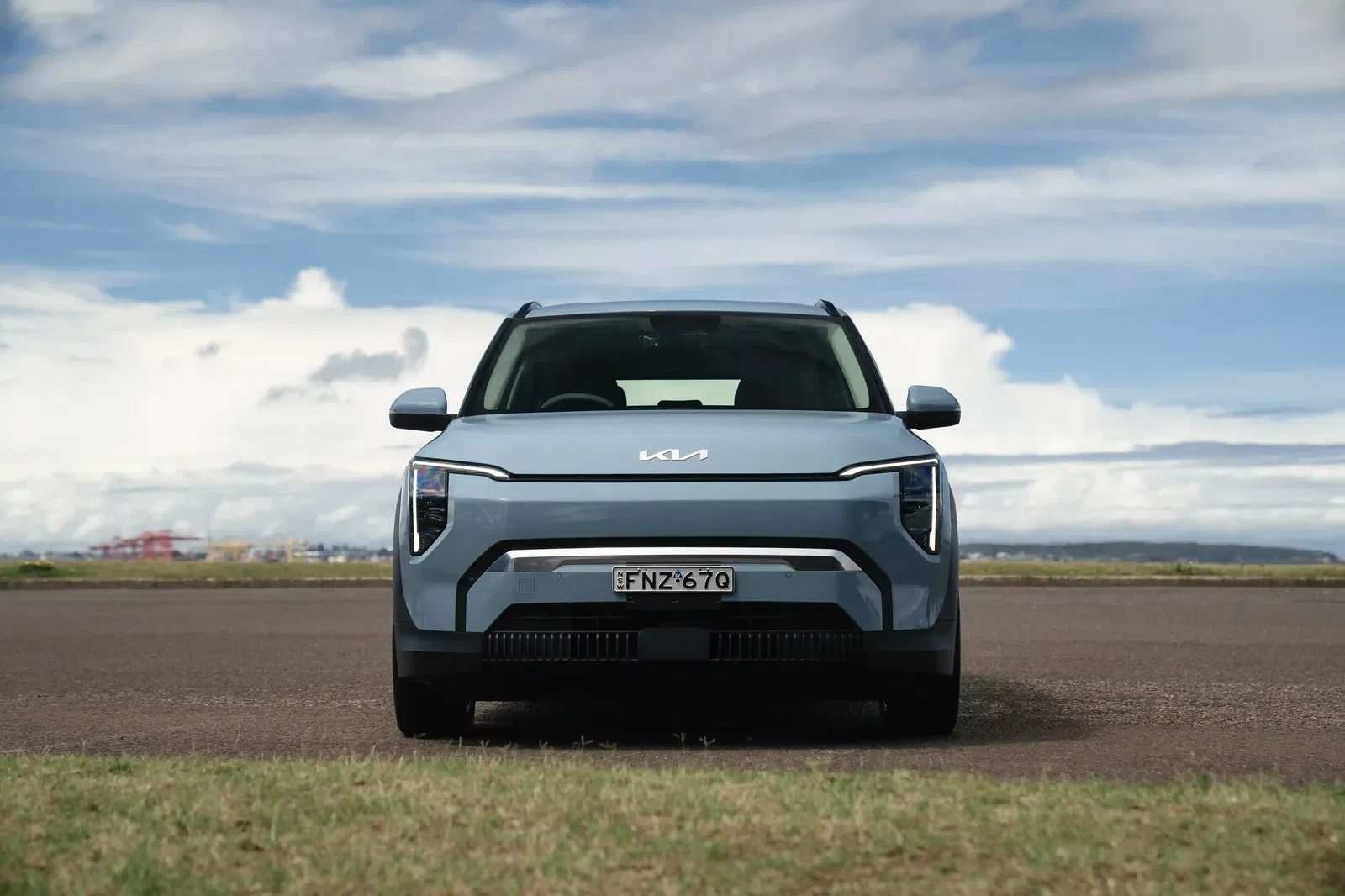



Modern, Functional:
The centrepiece of the cabin is a double-wide screen, composed of a 12.3-inch digital instrument cluster, a 12.3-inch infotainment screen, and a 5.3-inch climate control screen sandwiched between.
I’m sure there probably is a difference between the EV3 and the EV5, EV6, and EV9, but I can’t tell what it is at an initial glance. Kia has really just found an interior layout it likes, and has copied and pasted it across its electric-car range.

Why? Because it looks good, works well, and… is good. There’s nothing revolutionary about the EV3’s interior, but I’ll confirm for you the fact that it does everything it’s meant to.
It is, arguably, a little on the cold side – like one of those ultra-modern houses made from glass and concrete that impress your guests. It doesn’t pamper or cosset you, but that doesn’t mean it isn’t comfortable. It’s certainly spacious, offers a good driving position, and comes with high-quality screens and switchgear.
Again, it was the base Air variant that would be my pick. There’s no white plastic to attract dirty hands, as on the GT-Line, and the cloth upholstery is particularly nice. The artificial leather isn’t bad, but there’s a subtle luxury to the cloth I found very appealing.





Part-Time Family Duties:
While not always possible on these tests, I was actually able to spend some decent time in the back seat while being chauffeured around by a colleague. Even with the front seat in my preferred position – me being six-foot/183cm when posing for photos – there was a tonne of space in the second row, provided three adults aren’t sitting abreast.

Like almost every car that isn’t performance-focused, the rear bench is pretty flat, meaning I had to rely on the door and the fold-down armrest for support as the car was thrown through some corners on a mountain road. Not exactly a problem in the real world. The flat seat also means it’s easier to fit child seats.
While I suspect most families would be shopping for a larger car – like the EV5 – the EV3 feels like a perfect second car. Something to get a parent to work on the daily, while also performing the occasional family taxi duties when the SUV isn’t available. When it is needed, there are two USB-C ports in the rear to make sure the kids’ devices are kept charged.

Square Space
Unlike most electric vehicles out there, the EV3 isn’t very sleek and curvy – it’s downright boxy. Which is meant to go against aerodynamics and reduce driving range. The advantage? Interior practicality and space. And this has it in spades.
Throughout the cabin are hidey-holes and generous boxes to keep all your stuff, while the GT-Line comes with an extra folding table between the front-row occupants. Convenient if you’re a left-hander who needs to write stuff down as part of your job – though it’s more likely it will be used to consume Macca’s while on the run.
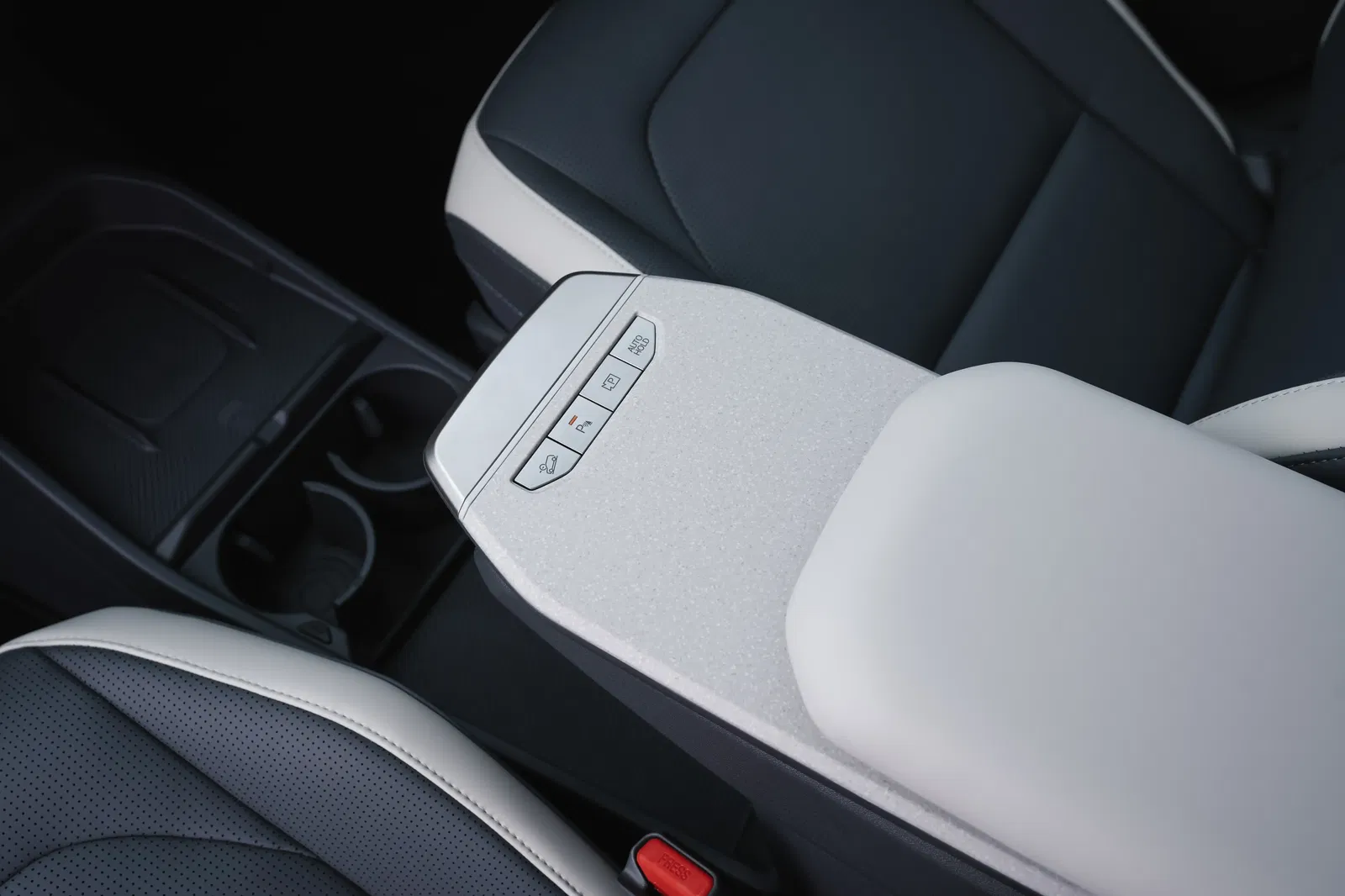
The boot boasts a generous 460 litres of luggage space, which is about on par with mid-size SUVs. Or, putting it another way, it has a bigger boot than you’d expect for a car of this size.


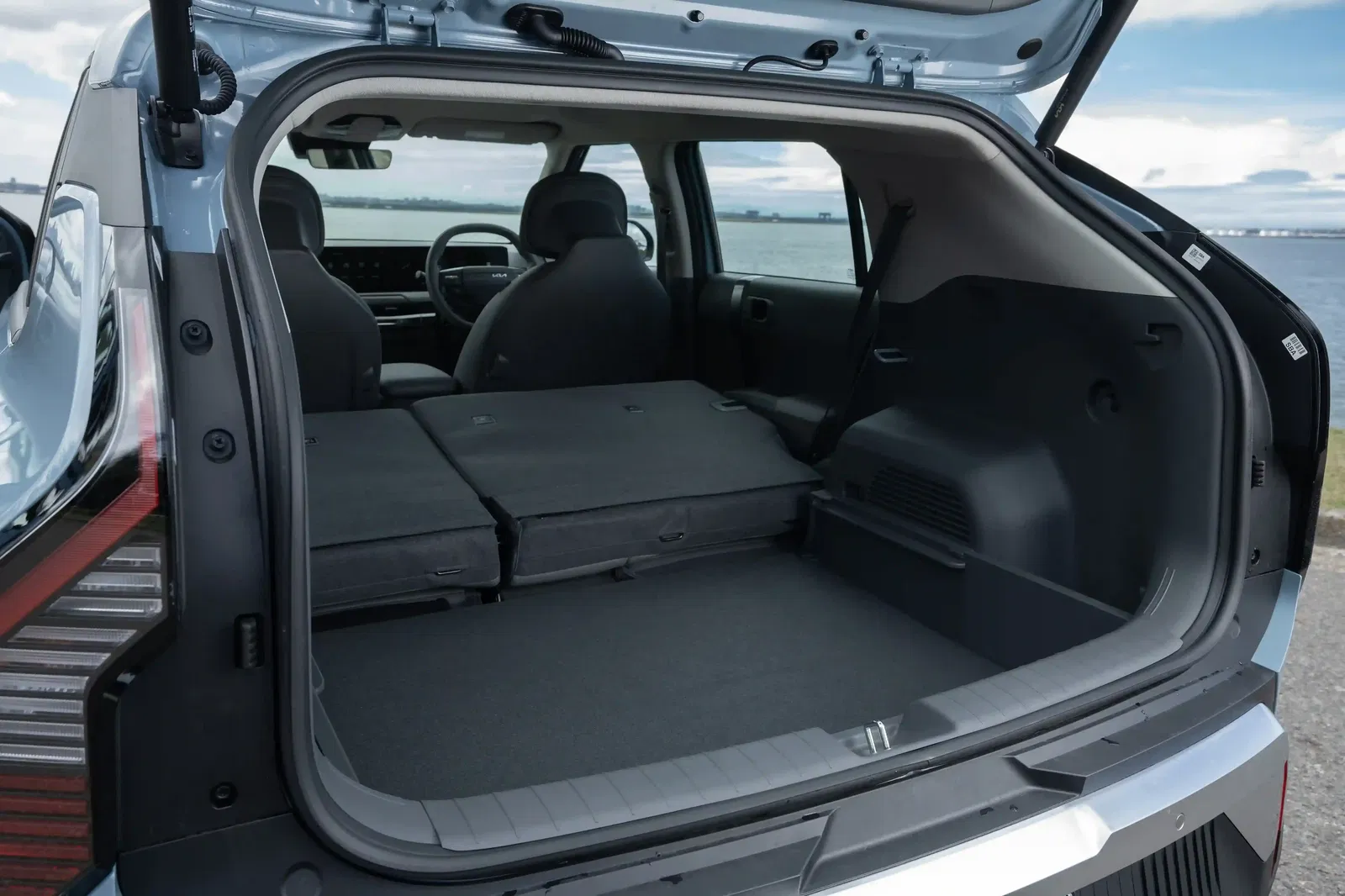

Torque On
Standard across the range is a single electric motor driving the front wheels, putting out 150kW and 283Nm. Not groundbreaking numbers by any means, but because that torque is always on tap – by virtue of being an electric motor – the EV3 feels decently brisk, all the time. Not a rocketship, but not underpowered.
But while the electric motor is standard for all variants, the base Air Standard Range gets a 58.3kWh battery pack, while the rest of the line-up – the Air Long Range, Earth Long Range, and GT-Line – all benefit from an 81.4kWh battery.

The difference between the two batteries is a claimed driving range of 436 kilometres versus 604 kilometres (WLTP) for the Air Long Range. However, both the Earth and the GT-Line get bigger wheels (though no more attractive), dropping the range back down to 563km.
New for the EV3 is Kia’s i-Pedal 3.0 system, which allows the driver to turn up or down the regenerative resistance on deceleration. At its lowest setting, the car coasts when you lift your foot off the throttle – but at its highest setting, the vehicle will feel as if it’s braking. Better known as ‘one pedal driving’, it’s actually recuperating energy and pumping that back into the battery, making it ideal for city driving.

While it can be off-putting initially, it’s very easy to get used to and can make a significant difference in getting the most from your electric car.
Just Ask
The Kia EV3 feels like the future – the next-generation of small cars. Spiritually, it feels like it would do the same job as a Toyota Corolla or Hyundai i30, except if you time-travelled a couple of decades.
While it’s heavier than its petrol-powered peers – with the weight noticeable on winding roads, particularly on turn in – the steering is sharp, while offering an acceptable amount of resistance that increases with sharper turns. Steering feedback isn’t its forte, but it’s also not a Porsche, and matches well to the car.

Dynamically, it’s also not going to blow anyone’s mind, but again, that’s not what this car is about. While it can eat up the road quickly – surprisingly so – it never feels like it’s encouraging the driver to squeeze the juice out. It’s a comfortable, relaxing, albeit somewhat sterile driving environment, and that seems to match its driving characteristics.
The EV3’s suspension is good in the majority of circumstances, but I found the rebound over bigger bumps was a little too soft for my liking. For most people, most of the time, it’s perfectly comfortable. But if you live somewhere with big humps and whoops in the road, there’s a chance of getting your passengers sea-sick.




To Be Continued
The Kia EV3 has yet to be officially rated by the Australasian New Car Assessment Program (ANCAP), so we’re leaving this section unrated. However, the EV3 is based on the E-GMP platform shared across both Kia and Hyundai, which – while not a direct translation – has achieved five-star safety ratings on other models.
The Kia EV3 certainly doesn’t short-change the buyer on safety gear, with the base model getting:
- Seven airbags
- AEB with pedestrian and cyclists detection
- Junction assist
- Lane-keep assist
- Blind-spot assist
- Highway Driving Assist 2
- Intelligent speed limit assist
- Driver attention monitoring

Sunshine & Happiness
As with all Kia models, the EV3 comes with a seven-year/unlimited kilometre warranty, while the car’s battery is covered by a seven-year/150,000km warranty. While not the absolute best in the industry, Kia’s warranty is one of the longer ones on offer.
Servicing is scheduled every 12 months or 15,000km, with prepaid plans costing $674 for three years/45,000km, $1285 over five years/75,000km, or $1897 over seven years/105,000km.

What do you get with the Kia EV3?
EV3 Air Standard Range
- 58.3kWh battery
- 150kW/283Nm electric motor
- Five driving modes
- LED exterior lights
- Pop-out door handles
- Cloth upholstery
- High-beam assist
- 12.3-inch digital instrument cluster
- 12.3-inch infotainment touchscreen
- Wireless Apple CarPlay and Android Auto
- Reverse camera
- Wireless smartphone charger
- 5.3-inch climate control screen
- Front and rear parking sensors
- 17-inch alloy wheels
EV3 Air Long Range (adds over Air Standard Range)
- 81.4kWh battery
- Artificial leather
- EV3 Earth Long Range (adds over Air Long Range)
- Artificial leather
- Power tailgate
- 19-inch alloy wheels
EV3 GT-Line Long Range (adds over Earth Long Range)
- GT-Line exterior
- GT-Line interior
- GT-Line steering wheel
- Head-up display
- Sunroof
- Eight-speaker Harman Kardon premium sound system

Final thoughts on the Kia EV3
There’s a lot to like with the Kia EV3. As touched on earlier, it feels as if it’s the spiritual successor of the Toyota Corolla or Hyundai i30 – just in an electric form. While plenty of people are buying oversized SUVs with not much interior space – like the inverse of Dr Who’s Tardis – this feels small on the outside and roomy on the inside.
While tech and features are clearly priorities for Kia, nobody will mistake this for a luxury interior. What is is though is basic, hardy, high quality, and with thoughtful, modern design attributes. Almost more architectural than automotive, in some aspects.

Out on the road, the EV3 does pretty much everything you could ask of it, without excelling particularly in one area. It’s better than a Corolla or i30, but doesn’t quite reach the same levels as a Tesla or other benchmark electric vehicle – nor should it. For daily commuting, it feels absolutely spot on.
It’s only once we get to pricing that a question mark starts to appear over the EV3. For me, the base variant EV3 Air Standard Range makes the most sense. It’s not an outright bargain by any measure, but you get a decent amount of kit for your money, and there seem to be quite a few advantages with going with the entry-level version – such as the lovely, practical interior and the more attractive exterior.

Anything more, and the EV3 seems to be struggling to justify itself. Or, to my earlier point, it makes the EV5 seem like a far more attractive option for the extra dosh.
But for those looking for a relatively straightforward electric car for the daily commute, one that can take of family taxi duties when needed, and in arguably a stunning package, the EV3 Air Standard Range ticks a lot of boxes.

Saucey rating breakdown
Saucey rating breakdown
FAQ
Sign up to our newsletter
Be the first to know when we drop new car reviews.
.avif)

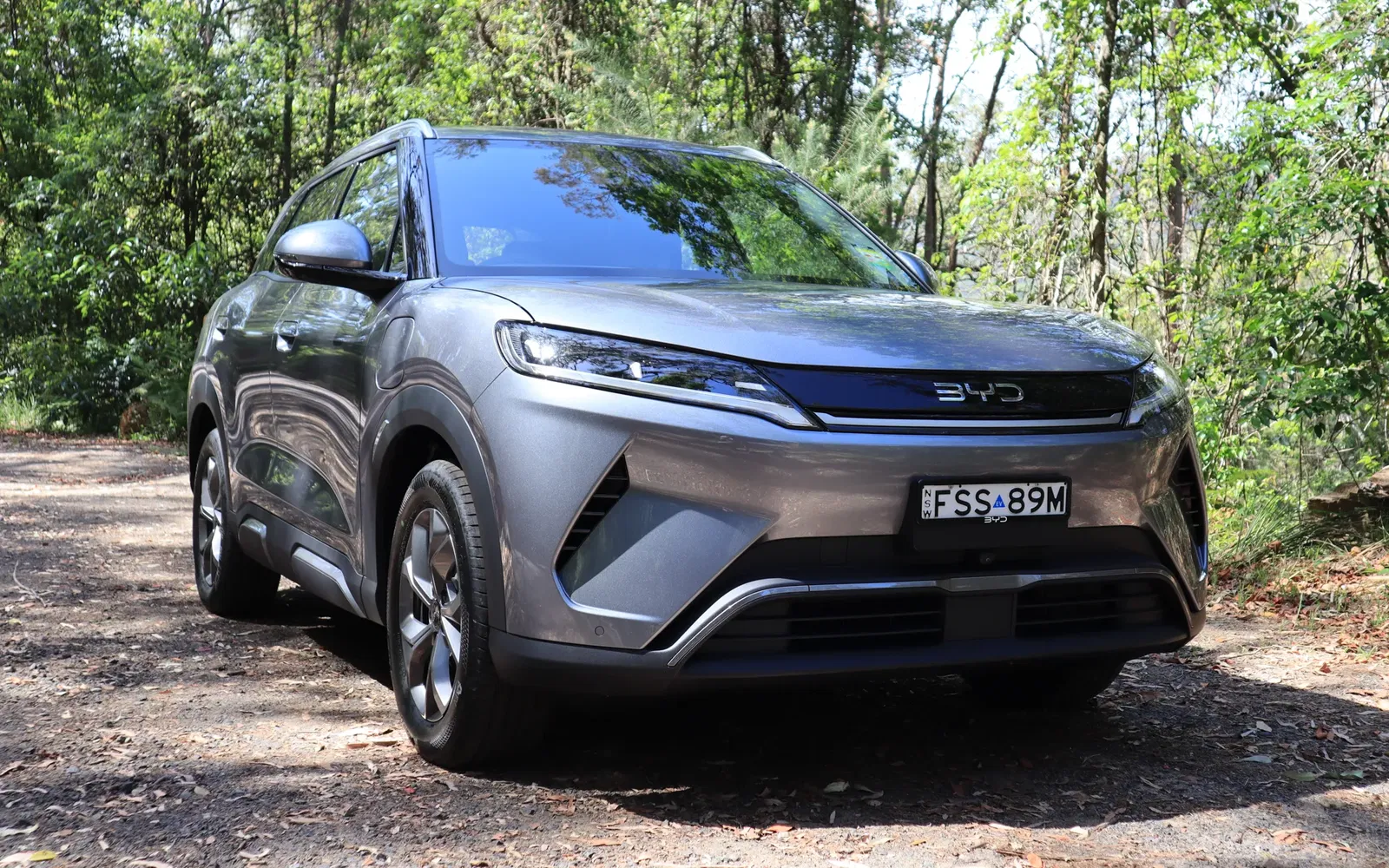

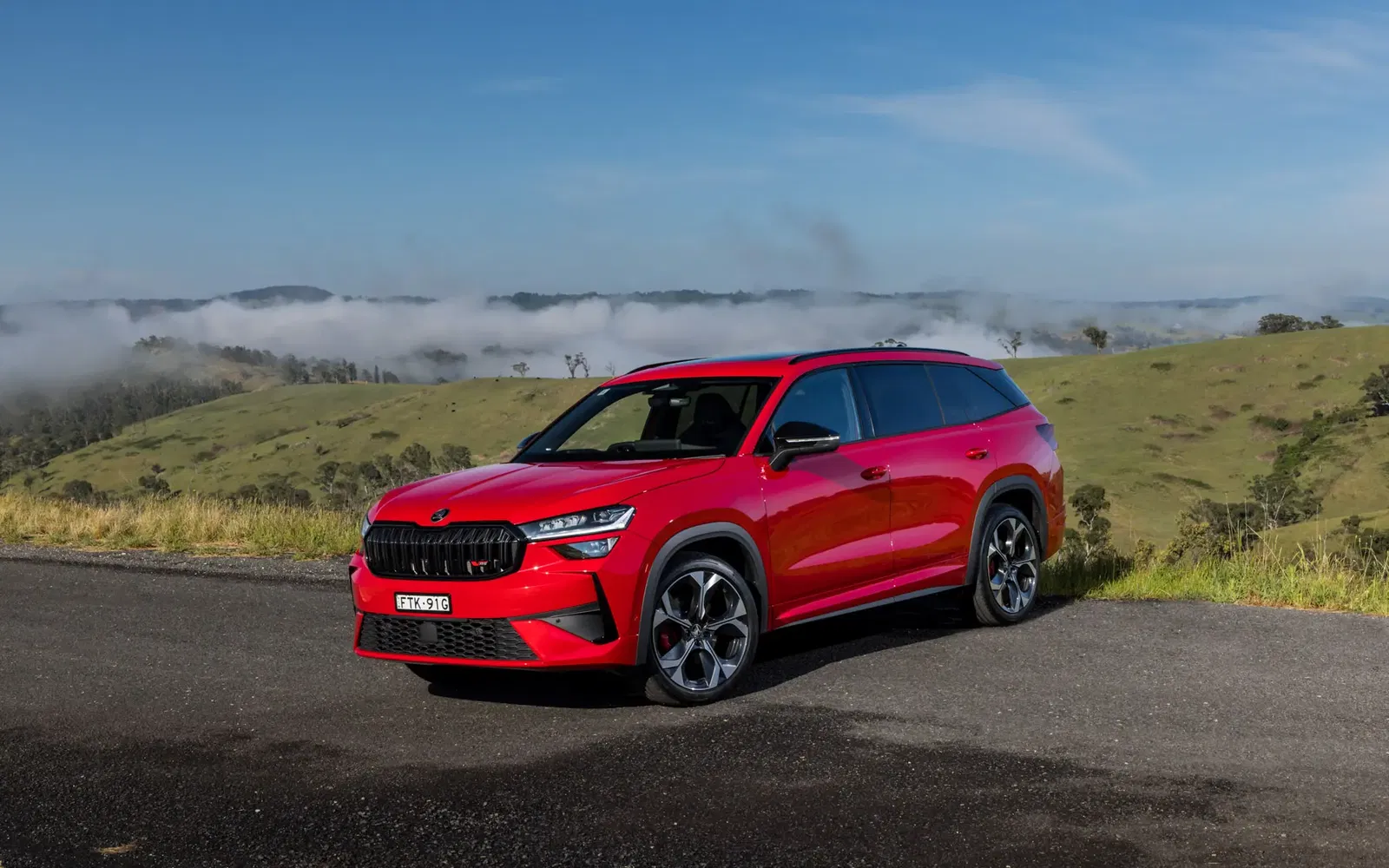
%20Calligraphy%20-%2003.webp)